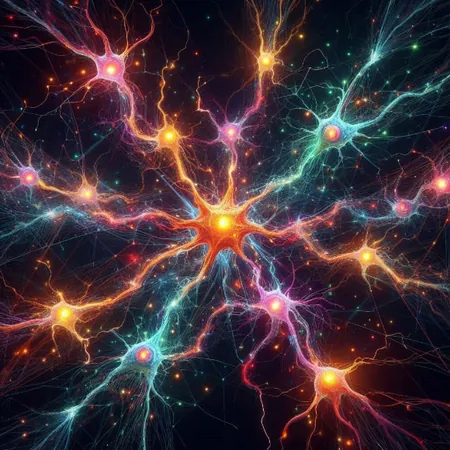
Neuroscientists Unveil 16 Unique Neuronal Types Behind Our Sense of Touch! What They Found is Mind-Blowing!
2024-11-06
Author: Siti
Introduction
In an exciting breakthrough within the field of neuroscience, a collaborative study led by researchers from the University of Pennsylvania, Karolinska Institute, and Linköping University has unveiled a complex landscape of the human sense of touch. This comprehensive investigation reveals that our nervous system is far more intricate than previously thought.
Traditional Understanding vs. New Findings
Traditionally, it was believed that each specific sensation—such as pain, pleasant touch, or temperature—was linked to a distinct type of neuron. However, this pioneering research challenges this oversimplified perspective, indicating that our bodily sensations involve a web of interactions among neuronal types.
Bridging the Knowledge Gap
As Dr. Wenqin Luo of the University of Pennsylvania noted, much of our current understanding of the nervous system has been derived from animal studies, primarily conducted on species like mice. This raises the important question of how relevant these findings are to human physiology.
The study aims to bridge this knowledge gap by creating a detailed atlas of 16 human-specific neuronal types involved in somatosensation—the way our body perceives touch, temperature, and pain. This research is groundbreaking as it is the first of its kind to link specific gene expressions within neurons to their respective sensory functions.
Methodology
Utilizing advanced techniques like deep RNA sequencing, the scientists meticulously analyzed the genetic make-up of individual neurons, categorizing those with similar expression profiles into distinct sensory neuron types. Through the application of microneurography—a method that allows scientists to listen to neuronal signaling in real-time—they were able to observe how individual neurons responded to stimuli like temperature changes and touch.
Key Discoveries
One astonishing discovery involved sensory neurons that typically respond to pleasant touch. Researchers observed that these neurons also reacted to heat and capsaicin—the chemical responsible for the heat of chili peppers. This unexpected reaction blurs the lines between pain response and touch perception, suggesting a shared neural pathway for different sensory experiences. Astonishingly, these neurons also responded to cooling, hinting at the existence of an unknown mechanism responsible for cold detection.
Significance of Findings
Dr. Håkan Olausson from Linköping University emphasized the significance of this research, stating, "In this study, we see what type of proteins these neurons express as well as what kind of stimulation they can respond to, and now we can link it. It’s a huge step forward."
The study also highlights another interesting twist: a rapidly conducting pain-sensing neuron that surprisingly responds to non-painful cooling and menthol. Dr. Saad Nagi expressed that the common belief in the specificity of neurons—such as one type detecting cold and another sensing vibration—might be an oversimplification of a much more elaborate network.
Comparative Analysis
The research also delves into the comparison of neuronal types among humans, mice, and macaques. The findings indicate that while there are similarities, significant differences exist, particularly in the rapidly conducting pain neurons. Humans possess a greater quantity of these high-speed pain neurons compared to mice. This difference points to an evolutionary adaptation related to body size and the need for quicker responses to potential injuries.
"The fact that pain is signaled at a much higher velocity in humans compared to mice is probably just a reflection of body size," Dr. Olausson hypothesized, further asserting the necessity for rapid signaling in humans due to anatomical differences.
Conclusion
This groundbreaking research emphasizes the complexity of our sensory systems and opens new avenues for understanding human physiology. The findings have been detailed in the prestigious journal *Nature Neuroscience*, marking a significant advancement in our understanding of how we experience the world through touch.
With these revelations, one can only wonder: What other mysteries lie within the human body waiting to be uncovered?

 Brasil (PT)
Brasil (PT)
 Canada (EN)
Canada (EN)
 Chile (ES)
Chile (ES)
 Česko (CS)
Česko (CS)
 대한민국 (KO)
대한민국 (KO)
 España (ES)
España (ES)
 France (FR)
France (FR)
 Hong Kong (EN)
Hong Kong (EN)
 Italia (IT)
Italia (IT)
 日本 (JA)
日本 (JA)
 Magyarország (HU)
Magyarország (HU)
 Norge (NO)
Norge (NO)
 Polska (PL)
Polska (PL)
 Schweiz (DE)
Schweiz (DE)
 Singapore (EN)
Singapore (EN)
 Sverige (SV)
Sverige (SV)
 Suomi (FI)
Suomi (FI)
 Türkiye (TR)
Türkiye (TR)
 الإمارات العربية المتحدة (AR)
الإمارات العربية المتحدة (AR)